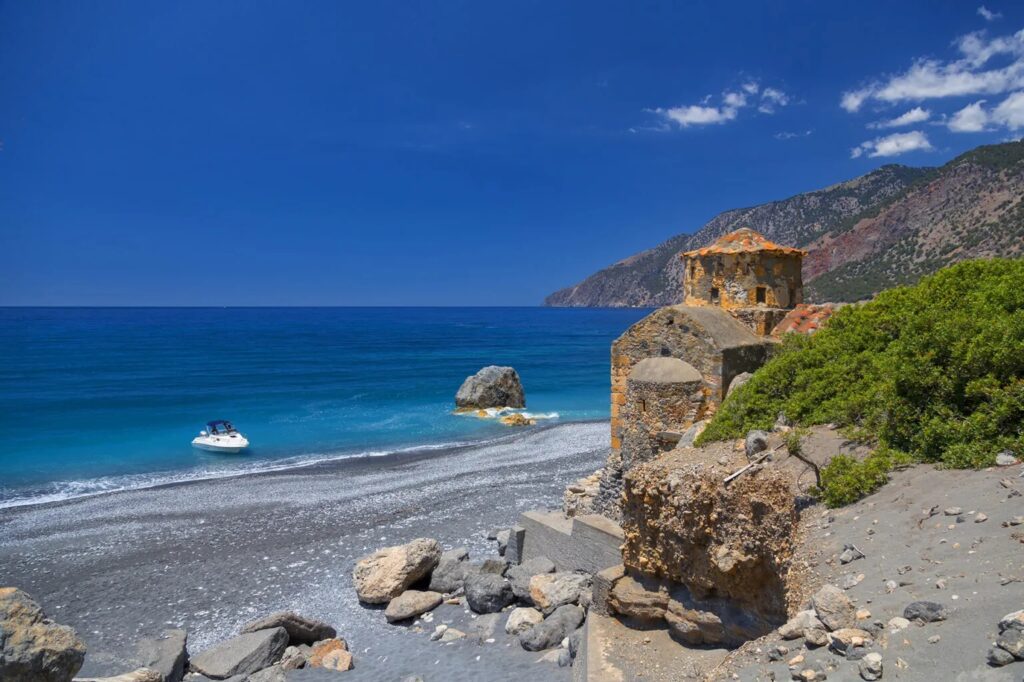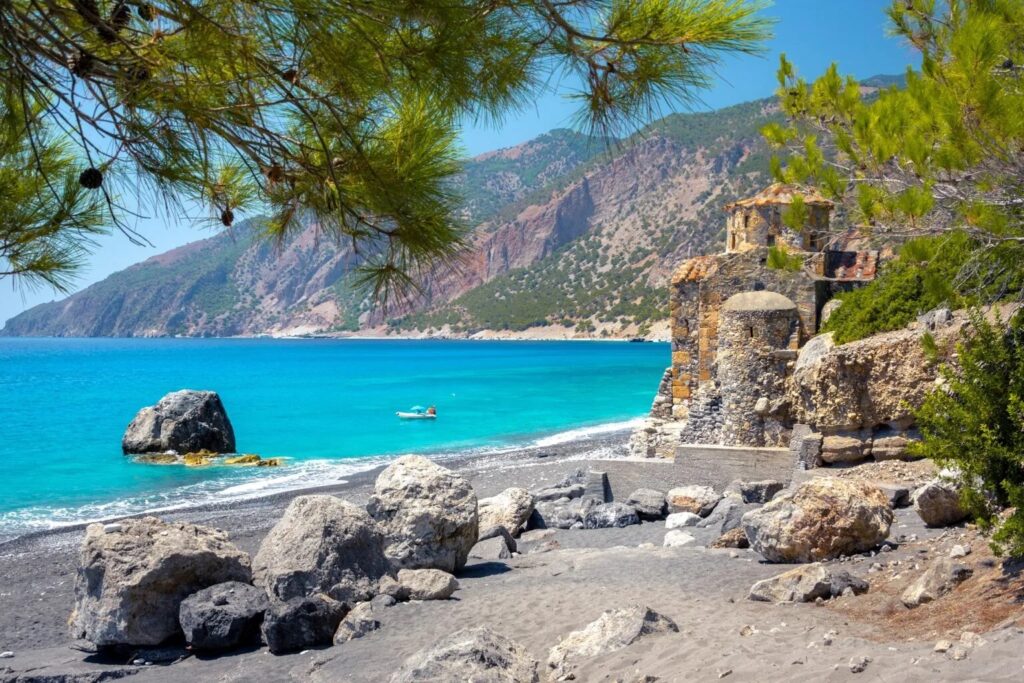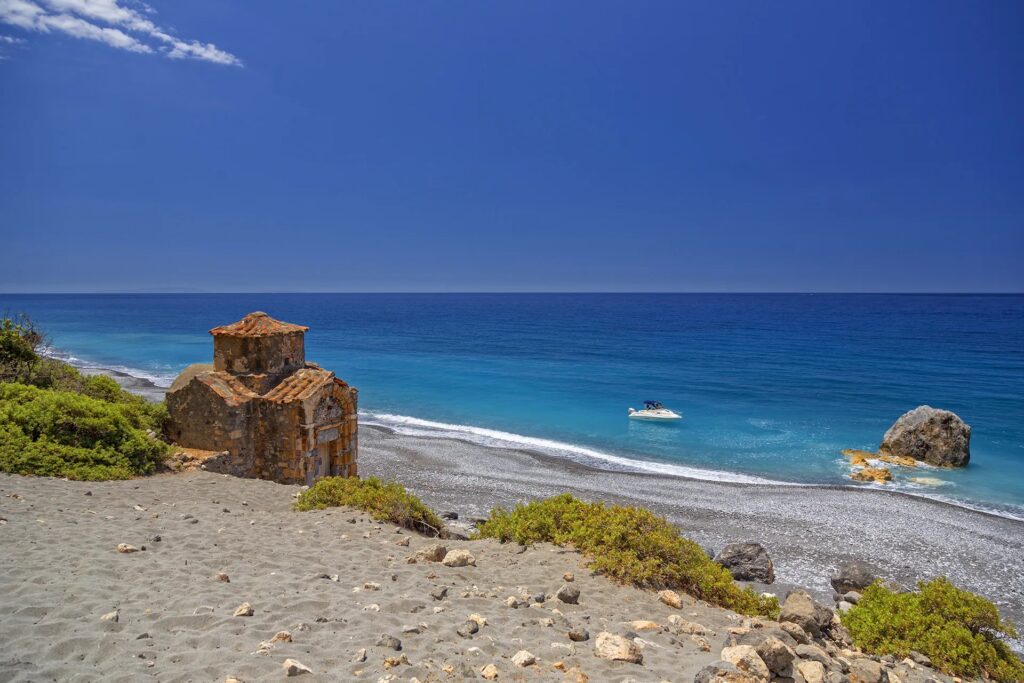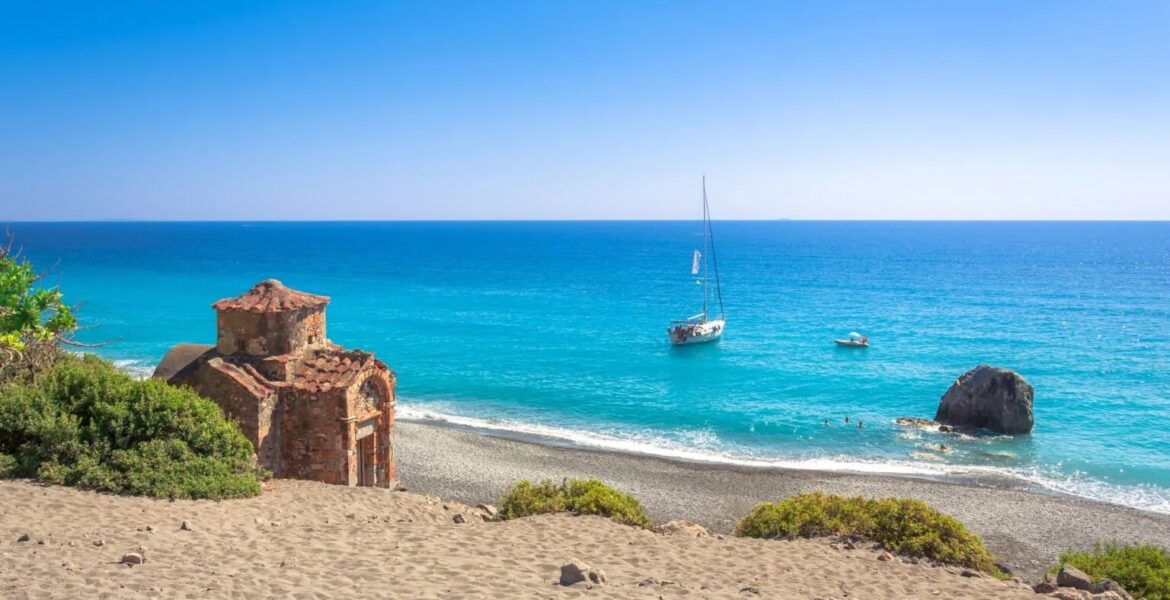Surrounded by the beautiful pine forest of Selouda, Agios Pavlos is a small but inaccessible paradise that can only be reached by foot or boat.
You will not discover Agios Pavlos beach if you do not have previous knowledge of Crete, nor will you get there easily if you do not plan your excursion well, but your effort will be more than worth it, as you will find yourself on an almost unspoiled beach that is impossible not to leave you impressed.
The isolated Agios Pavlos beach on the shores of the Libyan Sea in southern Crete—which should not be confused with the (better known) Agios Pavlos located 58 kilometres south of Rethymno, near Cape Melissa—is in Sfakia in the regional unit of Chania, in a place known to the locals as "Piso Aegialoi."
Of course, this is a very old confusion, dating back to the early Christian years when the Apostle Paul passed through the coast of southern Crete on his journey to Rome.
The saint's visit is echoed in the names of the two beaches in question, as there is confusion about what the available sources say. For some time, it was thought they referred to the isolated coast at Sfakia.
A more careful reading, however, reveals that it was the Rethymno beach.

Agios Pavlos is located between Agia Roumeli and Loutro, 3 kilometres (east) of the former and 6 kilometres (west) of the latter. However, none of these villages has a road to get there.
The beach is 1.5 kilometres long and covered with pebbles and (relatively) coarse sand, a combination that gives it a silver-grey appearance.
The surrounding landscape is wild, and it is no coincidence that the exits of the Elygia and Sapuna canyons are located near the beach. This, however, gives it another natural advantage, as the beautiful pine forest of Selouda surrounds it.
But note that the trees are higher than the shore, so don't expect them to provide shade. If you wish to stay right next to the sea, you should plan to bring a good hat, good sunglasses, and an umbrella.
Of course, the main characteristic of Agios Pavlos beach is the picturesque church, which was built on the coast next to the wonderful waters of the Libyan Sea with its abundant shades of blue. It is a Byzantine-era church dating back to the 10th century and is preserved in good condition so that it can be visited.
Inside, you will find a simple decoration based on religious images.

It goes without saying that there are no umbrellas or organised activities in the area. At a short distance, however, you will see a small taverna (also called Agios Pavlos) where you can eat and get water.
The waters in Agios Pavlos deepen sharply and are somewhat cold; however, they are crystal clear. Very few people frequent here, even at the height of the Greek summer.
Even in such a case, you can isolate yourself (if you wish) by moving east along the coast towards the path that leads into the surrounding pine forest.
How to get there?

Although there is no road to Agios Pavlos from Agia Roumeli or Loutro (as mentioned above), the beach is accessible via the coastal section of European Route E4, which connects the two villages.
The hiking route starting from Agia Roumeli is recommended, as it is passable and will take about 1 hour. The route from Loutro is clearly more difficult, so it is aimed at experienced hikers. Even so, however, it can take you up to 4 hours to get here.
The only other way to reach isolated Agios Pavlos is by sea. If you have your own boat, everything becomes simple. Otherwise, you must find someone to take you by boat, either from Agia Roumeli or Loutra.
Make sure to arrange for your transport back to the starting point.
Hari Simvoulidi is a columnist for Travel. Translated by Paul Antonopoulos.
READ MORE: Athens: A metropolis pulsating with life.

